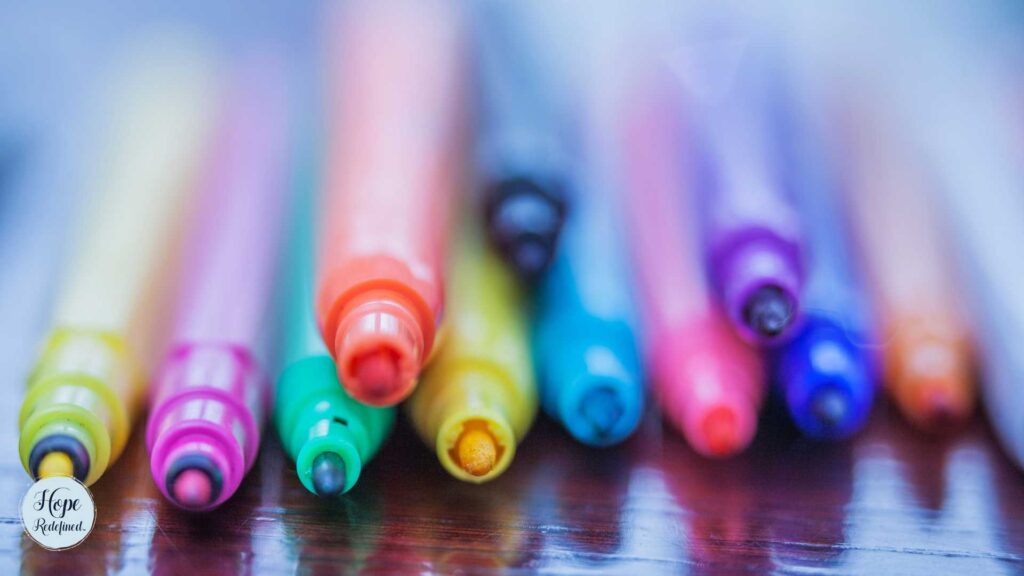After my betrayal, my world became a canvas of muted colors and darkness. I lived many days in a haze of gray, a numbness to anything vividly colorful or overly emotive – negative or positive. Yet as I began healing, I stepped back into my creative side. I am not an artist by any means, but I felt a deep need to create something – anything as long as it had color. That’s how I found myself surrounded by markers and colored pencils with a simple coloring sheet. I colored, and each hue added to the page ushered in the tiniest part of healing.
Coloring Encourages Healing
The recovery road of sexual betrayal can be a complex journey, and finding soothing, accessible ways to process emotions can make a profound difference. When trauma brain is raging, engaging in a creative, meditative coloring activity is a simple way to move toward healing. It can become a safe space for you to reconnect with yourself, process feelings, and gradually rebuild trust in your inner world.
Why does such a simple activity usher us into healing? Let’s take a look.
A Mindful Activity
Coloring offers a unique form of mindfulness (a mental state achieved by focusing one’s awareness on the present moment, while calmly acknowledging and accepting one’s feelings, thoughts, and bodily sensations). By focusing on colors, patterns, and shapes, we redirect attention from painful thoughts or memories to the present moment. This can quiet the mind, reducing anxiety and helping to ground emotions. For those dealing with the intense feelings that often follow betrayal, taking time for calm reflection is essential. Coloring encourages this mindfulness, offering a break from emotional distress and fostering a sense of peace.
Creative Control
Moreover, coloring taps into our brain’s creative side, which can be a refreshing change when dealing with feelings of grief or betrayal. In choosing colors and making creative decisions, we regain a sense of control—something that often feels lost after betrayal. The act of creating something beautiful or personally meaningful can be empowering, helping to restore a sense of self-worth and agency.
The Voice of Color
Coloring is also a form of non-verbal expression. Sometimes, words fall short when we attempt to articulate deep pain or betrayal. Colors and images can serve as powerful tools to express complex emotions without the pressure to explain them. Through the choice of colors or intensity, we can communicate what’s on our minds, providing a safe outlet for processing emotions.
In addiction, coloring can foster self-care and self-compassion, which are essential for healing. Dedicating even a few minutes each day to this simple practice can reinforce the importance of taking time for oneself, gently reminding individuals that their well-being matters. The repetitive, rhythmic motion of coloring can feel comforting, creating a feeling of security that’s often shaken after betrayal.
Coloring with Scripture
Finally, when we add scripture or worship music to the practice, we open the door for God to speak. This journey can steal our relationship with God. Whirling emotions, a turbulent mind, or chaotic home and relationships hinder our ability to commune with Him. However, incorporating coloring into the healing process is a beautiful way to nurture yourself and also your relationship with the Lord. It allows space for reflection, creativity, and calm – a quiet moment to focus on God’s truth. Both are essential components for recovery and rebuilding inner peace.
Coloring is a step you can take no matter where you are on the journey. So grab a crayon and move toward healing today.
*Check out Hope Redefined’s Resting with Color Downloadable Coloring Books to get started.

